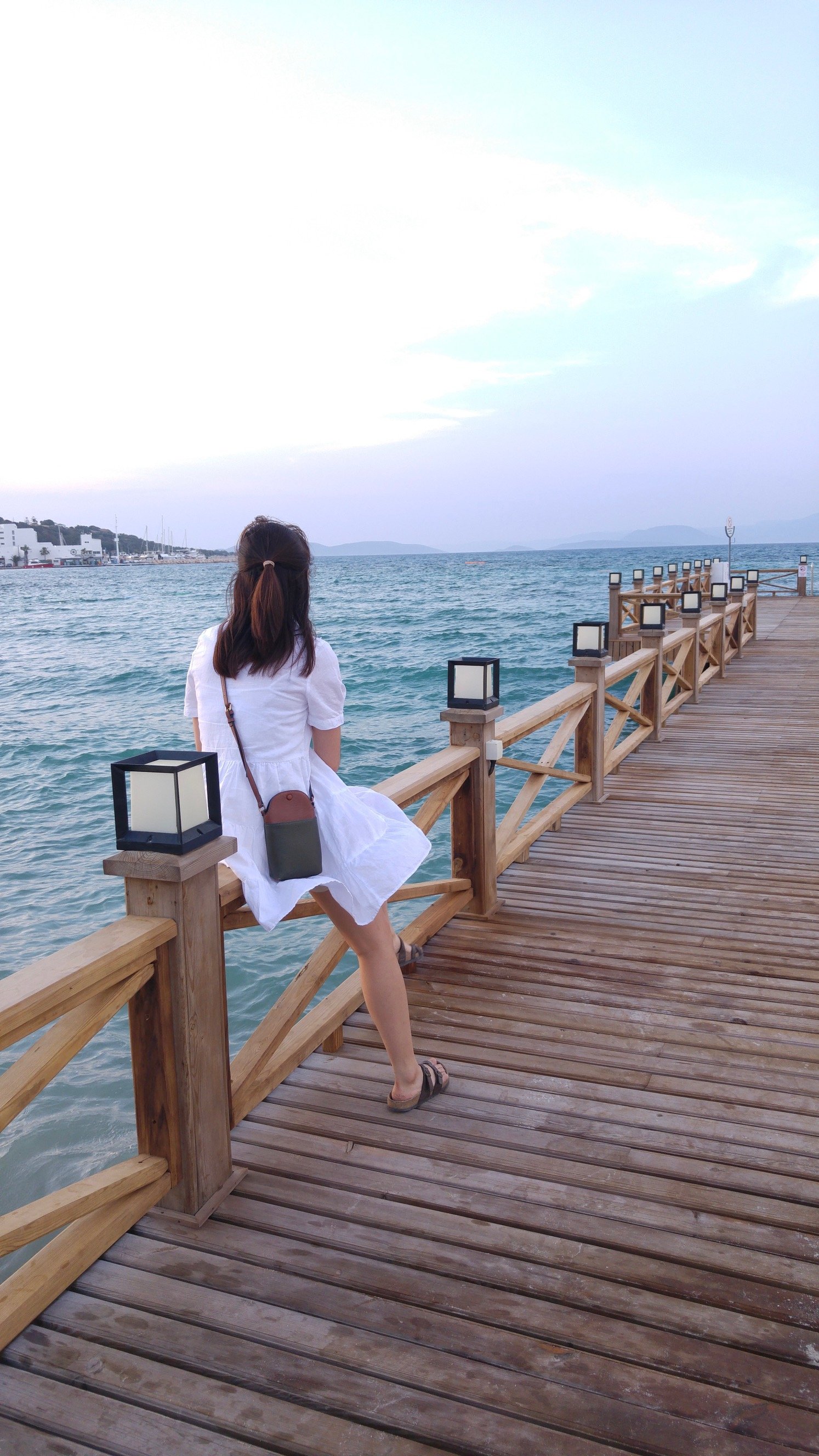As I stared out the window of the plane, the clouds cleared revealing familiar pink pastel-coloured rooftops. It felt strange coming back to Istanbul as an outsider looking in, while having the intimate knowledge that can only be garnered from living in this city.
As I left the airport, the air was pungent with cigarette smoke. Cars honked, signalling us to hail a taxi. Riding a Turkish taxi is an obstacle race on the road as the car weaves in and out of other cars and while being jostled about. I was almost thrown to the other side of the cab. I smiled, feeling at home.
I arrived at my parent's house — they are in Istanbul working as humanitarian workers. I fell asleep, blanketed by the warm air and thinking about places to visit over the next two months. In the next couple of days, we traversed the local streets, which is an adventure in itself. The best restaurants are always found in obscure corners.
As I passed by the cool green trees, lost in the sea of people, my family and I walked to a kebab restaurant where we are regulars. We jaywalked across the street despite the incoming cars, which is a necessary action in Turkey unless you wish to be standing on one side of the road for thirty minutes. Soon, we arrived at a small restaurant with a red awning, where we were seated outdoors.
As an appetizer, we were served flatbread, puffed in the middle, and dipped in tomato sauce. Then we had pide, what one might call Turkish pizza, except it is almond-shaped and cut into vertical strips. The molten cheese stretched as I lifted the strip to my mouth. Then, we ate the kebab, with its grilled tomato, green bell pepper and roasted skewered meat.
I visited Taksim, a neighbourhood in the downtown part of Istanbul. From here, my friends and I spot the Galata tower, a cylinder tower with a conical top built during the Byzantine empire. It is fabled that if you kiss your lover on top of the tower, they are destined to be your true love. I took a picture with my friend at the junction of a cobblestone street where the tower juts out in the background, and along the street are colourful yellow, green and pink pastel-coloured buildings.
The colourful seaside town of Kusadasi, Izmir was once a Greek town. People were dressed in expensive-looking outfits, the restaurants were pricey and loud music flowed out into the streets. As Izmir is a seaside destination, my family and I also visited the Aegean sea. It was the peak of summer but the turquoise-coloured water is colder than it appears, so I stayed on the sand sunbathing.
On another day, I went out with my friends to Kadikoy. Kadikoy was more modern than the traditional downtown parts of Istanbul, with young people walking in the streets. Here my friends and I tasted manti, or Turkish dumplings, arranged like a wheel around a big plate, topped with a chunk of yogurt and spicy red sauce.
Going to Kadikoy involved crossing the Bosphorus Sea from the European to the Asian continent. On our way back, the sea was illuminated by a blood-orange sunset, the wind blew on my cheeks. Looking out beyond the sea is the silhouette of Hagia Sophia, the Blue Mosque, and black domes and minarets rose above the horizon.
Earlier on the trip, I also visited the Hagia Sophia. The pastel pink walls of the Hagia Sophia have served many purposes in the nearly 1,500 years it has been standing. Originally built as a cathedral during the Byzantine empire, you can still see remnants of the Orthodox influences in paintings. Many paintings are overlaid with panes with Arabic letters, which were reinstated when the Hagia Sophia returned to being a mosque after briefly being a museum. The floor was covered in a dark green carpet. As I looked at the silhouette of Hagia Sophia, once again I was reminded that in Turkey, a history of two distinct religions flows — Islam and Christianity.
Following this rich history of religion, my family and I also visited Ephesus, the city where Apostle Paul is said to have preached. Beginning to walk into the fallen city of Ephesus (where the Goths invaded in 262 AD), my feet were on smooth marble paved stones and fallen colonnades, which must have once lined the sides of the road. Some of these looming colonnades are still standing, and I was amazed to walk by structures that stood more than 2,000 years ago.
As we wandered by a marketplace, I imagined people rolling in carts filled with goods through the wide streets of Ephesus, merchants shouting and people being jostled about. Here, encased in a room there was also a sculpture of the goddess Aphrodite. Walking further, sculpted figures guarded the doorway to the ruins of a library — one can imagine how this city thrived, being advanced in culture, literature, mercantilism and the arts.
Crossing a dirt path surrounded by grass and reeds on the outskirts of the city, there is a small church and a burial site where the Virgin Mary is believed to have spent her last days with Apostle John.
Turkey is rich not only in the modern sense but with its layers of history — spanning as far as before the Biblical era — but it is also rich with culture from a multicultural population.
Visiting Turkey time and time again, I realize that places go on even if you leave. It is strange that places remain, just like the ruins of Ephesus, yet within them, the sounds of the streets change in subtle tones. It is like returning to a second home after years of absence. I wonder what colourful changes I will notice when I next visit Istanbul, the city I love.



